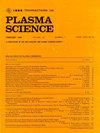Influence of Post Plasma Treatment on the Photocatalytic Activity of BiVO₄ Synthesized by Surfactant-Assisted Hydrothermal Method
IF 1.3
4区 物理与天体物理
Q3 PHYSICS, FLUIDS & PLASMAS
引用次数: 0
Abstract
Monoclinic bismuth vanadium oxide (BiVO4) has been synthesized by solvothermal method with the assistance of surfactant, and the prepared sample was treated with cold plasma in argon atmosphere. The hydrothermal temperature has been controlled at等离子体后处理对表面活性剂辅助水热法合成的 BiVOTEXPRESERVE0 光催化活性的影响
单斜氧化铋钒(BiVO4)是在表面活性剂的帮助下通过溶热法合成的,制备好的样品在氩气环境中经过冷等离子体处理。在热风炉中将水热温度控制在 80~^{\circ }$ C,持续 3 小时。使用了四种不同的表面活性剂,即己胺、PEG、PVA 和 PVP。用辉光放电(GD)等离子体技术对制备好的样品进行 20 分钟的氩气等离子体处理。分别用 SEM 和 XRD 分析了样品的形貌和结构特性。对其光学特性进行了评估,结果表明其在紫外-可见光区域具有较高的吸光度。添加了 PEG 的 BiVO4 的光催化活性显示出对亚甲蓝染料更高的降解率,即在可见光照射下 180 分钟内降解 56%。PL 和拉曼分析进一步证实了这一结果。BET 分析用于检测样品的孔径和比表面积。此外,还通过稳定性测试评估了光催化剂的可重复使用性。XPS 和 TEM 分析了制备样品的成分和结晶性质。对甲基溴染料降解的 GCMS 分析推断了染料降解后样品的稳定性。GCMS 分析和可重复使用性测试证实了光催化过程后 PG 的稳定性,并证实等离子处理有助于提高 PG 的稳定性。
本文章由计算机程序翻译,如有差异,请以英文原文为准。
求助全文
约1分钟内获得全文
求助全文
来源期刊

IEEE Transactions on Plasma Science
物理-物理:流体与等离子体
CiteScore
3.00
自引率
20.00%
发文量
538
审稿时长
3.8 months
期刊介绍:
The scope covers all aspects of the theory and application of plasma science. It includes the following areas: magnetohydrodynamics; thermionics and plasma diodes; basic plasma phenomena; gaseous electronics; microwave/plasma interaction; electron, ion, and plasma sources; space plasmas; intense electron and ion beams; laser-plasma interactions; plasma diagnostics; plasma chemistry and processing; solid-state plasmas; plasma heating; plasma for controlled fusion research; high energy density plasmas; industrial/commercial applications of plasma physics; plasma waves and instabilities; and high power microwave and submillimeter wave generation.
 求助内容:
求助内容: 应助结果提醒方式:
应助结果提醒方式:


